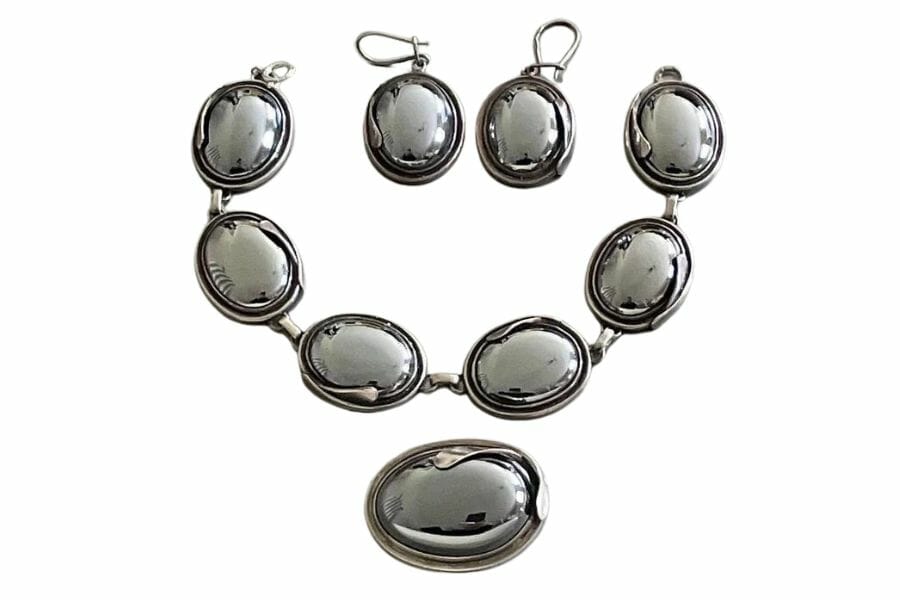Hematite and magnetite are both iron ores and hold significant interest for those who study and collect minerals. These two ores have many aspects in common, as well as some notable differences that can affect their use in various applications.
Comparing hematite vs magnetite can provide a fascinating insight into the world of geology. Both of these minerals have iron in their composition, which gives them their metallic nature, but that’s just scratching the surface.
Both play significant roles in the iron industry and are integral to Earth’s geology. Both have been used throughout history for their unique properties, be it in ancient amulets or modern technologies.
Understanding their contrasts and commonalities can provide a deeper appreciation of their significance in our world.
Hematite vs Magnetite – The Major Differences
Hematite and magnetite are both types of iron ore, but they have some key differences. While they might look a bit alike at first glance, a closer look reveals unique characteristics for each. Let’s dive in and explore what sets them apart!
Colors – Hematite’s colors range from gray to rust-red
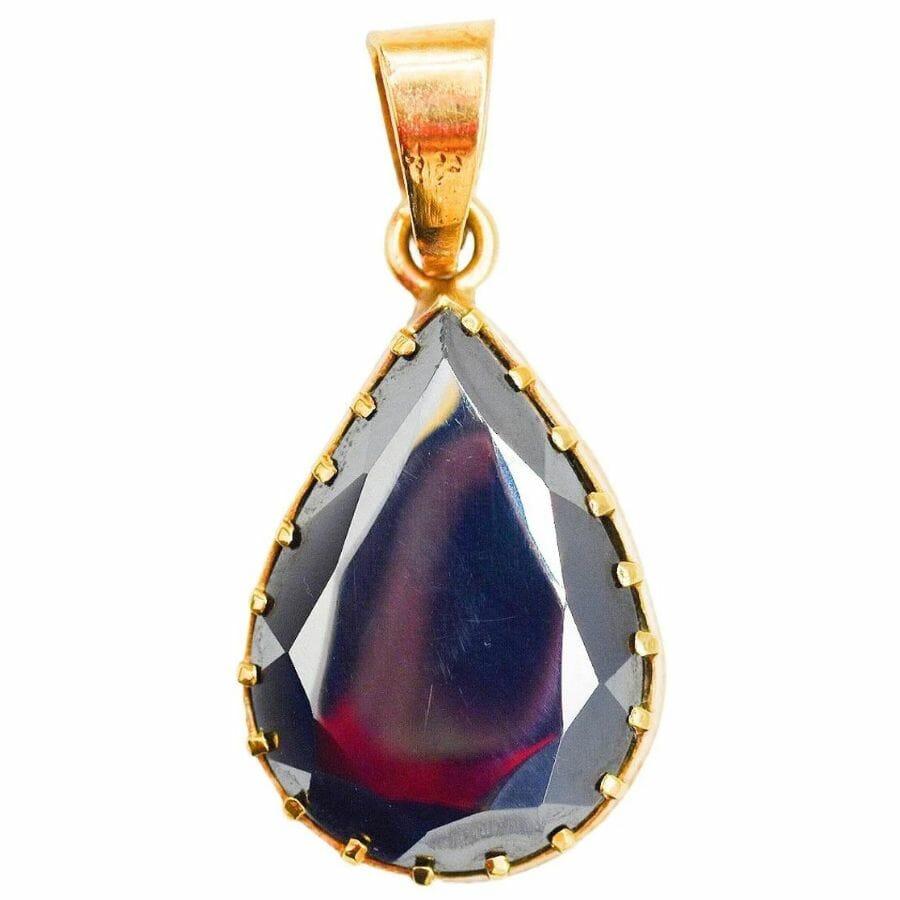
Hematite and magnetite, both popular iron ores, display distinctive color variations that make them easily distinguishable.
Hematite offers a broad color palette. When in its metallic form, it carries a shimmering grey hue, giving it an appearance similar to metal.
But it doesn’t stop there. In certain forms, especially the earthy and compact types, it turns rust-red. This rust-red resembles the color seen on iron objects left out in the rain.
When found in crystals or massively crystalline ores, hematite can be steel-grey to almost black, making it even more diverse in appearance.
On the other side, magnetite is predominantly known for its dark tones. It’s generally black, which contrasts starkly with many of hematite’s lighter forms.
But it’s not just a flat black. When hit by sunlight, magnetite can display a brownish tint, especially when viewed under the sun. This subtle shade adds a touch of warmth to its otherwise cool appearance.
Comparing the two, hematite boasts a broader spectrum of colors from metallic grey to rust-red, while magnetite maintains its identity in the darker range with occasional brownish undertones in the right light.
Streak – Magnetite’s streak color is black
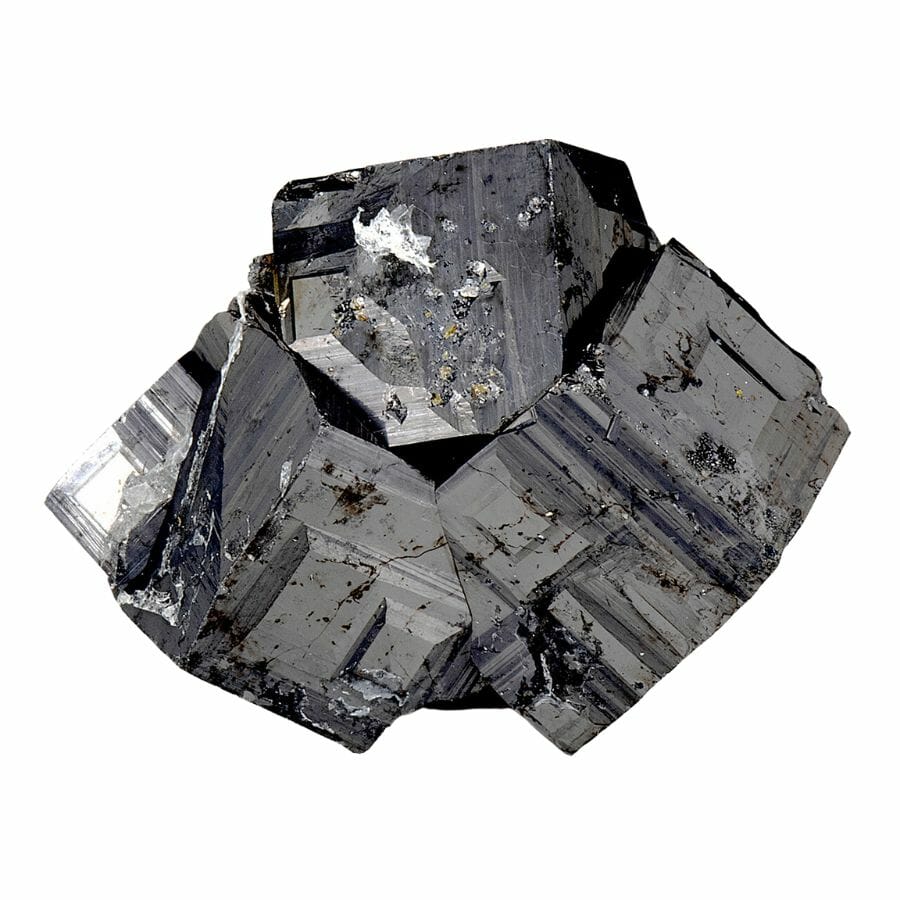
Streak tests are a handy way to identify minerals, especially when dealing with those that look similar. The colors that minerals leave behind can reveal a lot about their identity, and that’s definitely the case with hematite and magnetite.
Hematite, when subjected to a streak test, leaves behind a vivid mark that can range from bright red to dark red.
Imagine drawing on a piece of white paper with a crimson crayon; that’s the kind of hue hematite can produce. This red streak is quite distinct and contrasts starkly with the often metallic gray or rust-red appearance of the mineral itself.
Magnetite, in stark contrast, leaves a completely different impression. Its streak is black, no frills or variations. It’s a deep, bold mark that’s unmistakably dark.
This solid black streak matches well with magnetite’s typically black or dark brown appearance.
Luster – Hematite can both shine and glitter
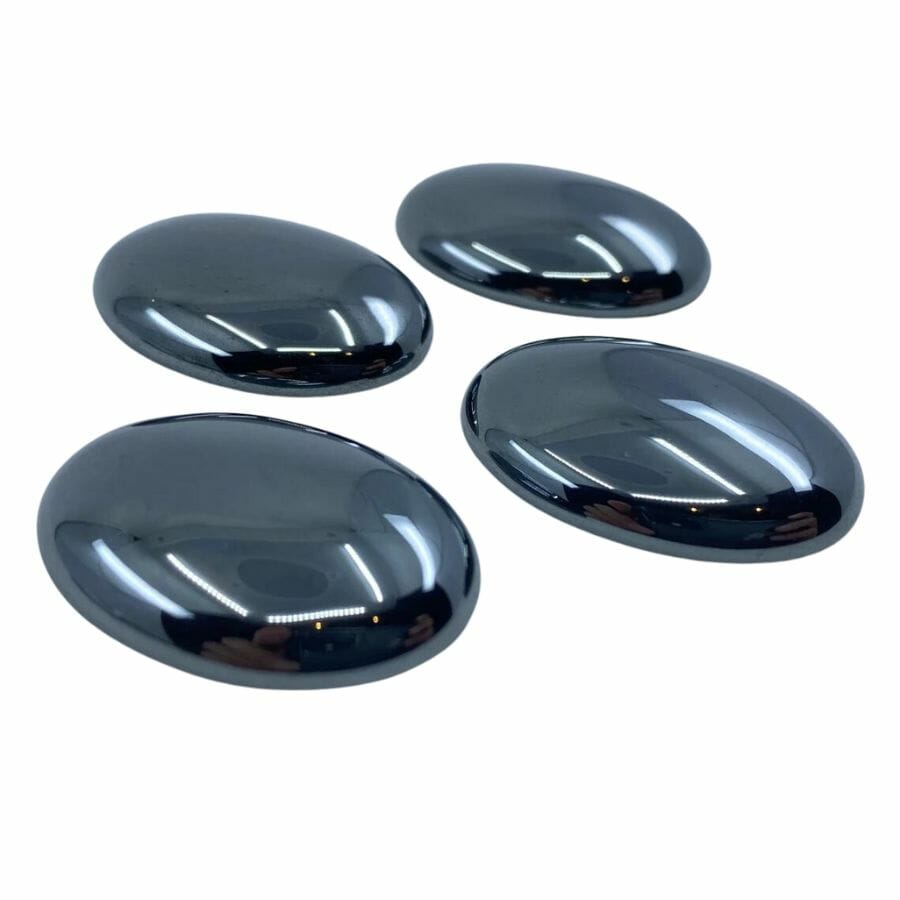
Luster refers to the way light interacts with the surface of a mineral. It’s like the mineral’s way of shining or reflecting light. Hematite and magnetite’s luster is a neat way to spot the difference between the two.
Hematite boasts a range in its shine. It can have a metallic luster, which means it shines and reflects light just like a piece of polished metal. But there’s more; hematite can also possess what’s called a ‘splendent’ luster.
“Splendent” might sound like a fancy word, but it simply means that the mineral has a brilliant or sparkling shine, almost like glitter.
Magnetite, on the other hand, is a bit more straightforward. It predominantly has a metallic luster. This gives magnetite a reflective sheen similar to hematite’s metallic look. It’s like the gleam of a freshly polished piece of black metal.
So, while both minerals can shine like metal, hematite offers a bit more variety with its potential for a sparkling, splendent luster. Magnetite keeps it classic with its consistently metallic sheen.
Crystal structure – Magnetite forms in pointed crystals
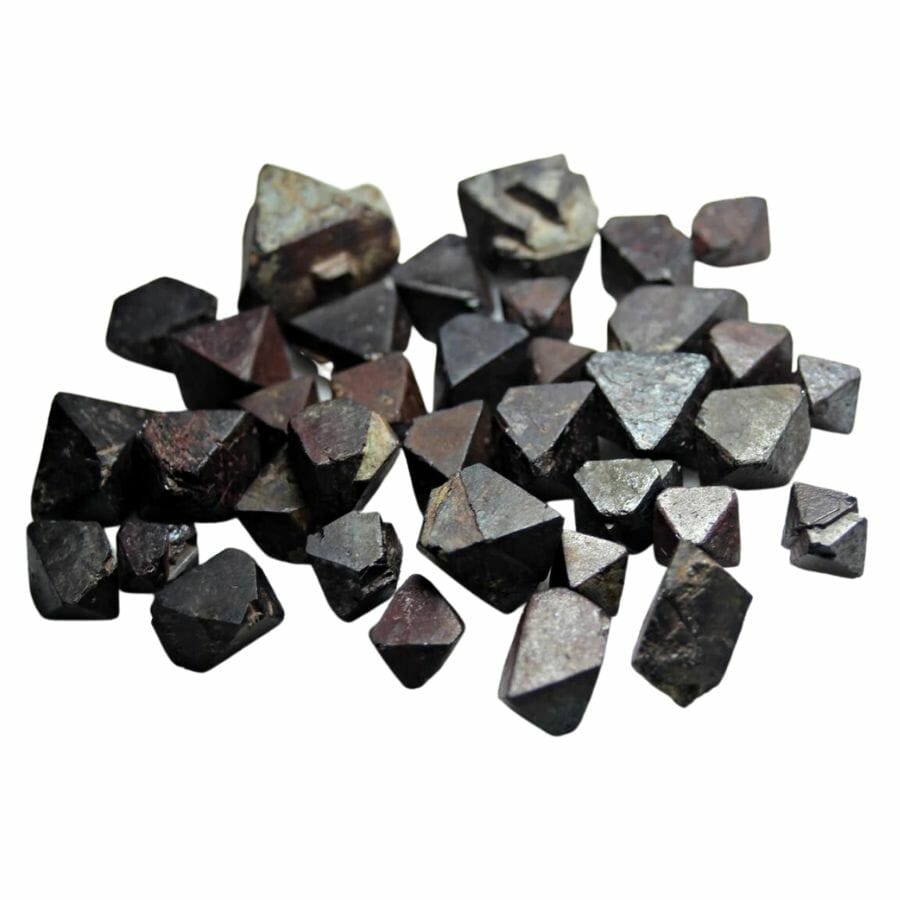
Crystal structures can tell a lot about a mineral, and they’re like a mineral’s own unique fingerprint. Hematite and magnetite, despite being closely related, have distinct crystal structures that set them apart.
Hematite takes form in the trigonal system, which means its crystal units are shaped like stretched pyramids. Its range of shapes is wide and varied.
Sometimes, the crystals are flat and thin, resembling the pages of a book, and these are described as “micaceous” or “platy.” Hematite can also form in clusters that look like rose petals, and these are known as “rosettes.”
Other times, the mineral might appear in rounded, grape-like forms called “botryoidal” or in shapes resembling kidney beans, which are termed “reniform.”
Additionally, hematite can be found in fibrous, columnar shapes and even in earthy, grainy forms. Some hematite even looks like tiny fish eggs, and these are called “oolitic.”
On the flip side, magnetite keeps things a bit more straightforward. It belongs to the isometric system, which is essentially a fancy way of saying its crystal units are shaped like cubes.
However, magnetite’s primary crystal shape is octahedral, which is like two pyramids attached at their bases. The appearance of magnetite can range from these sharp octahedral shapes to more rounded, grainy forms.
Chemical composition – Hematite has a far simpler composition
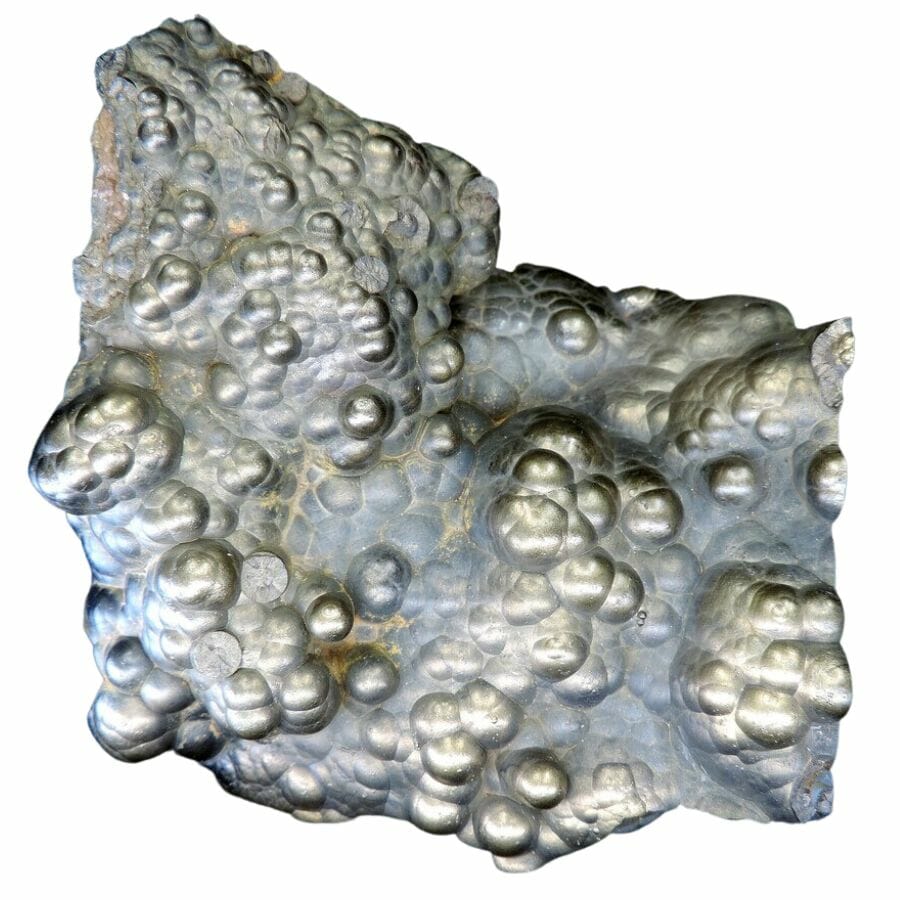
Hematite and magnetite might both be made of iron and oxygen, but their chemical compositions reveal a whole different story.
Starting with hematite, it’s made up of iron and oxygen, with a specific formula of Fe2O3. That means that for every two iron atoms, there are three oxygen atoms hanging around with them.
Now, magnetite’s formula is a bit more complex. Its formula is Fe2+(Fe3+)2O4. This tells us that there’s a mix of two different types of iron in magnetite: ferrous (Fe2+) and ferric (Fe3+) iron.
What makes this difference fascinating is how it affects the mineral’s properties.
Hematite’s straightforward iron and oxygen recipe gives it one kind of behavior, while magnetite’s mix of ferrous and ferric iron creates different magnetic properties.
Though both are iron oxides, this subtle difference in chemistry leads to distinct appearances, behaviors, and uses for each mineral. It’s a great reminder that even a small change in a formula can lead to big differences in the mineral world!
Conductivity – Magnetite is better at conducting electricity
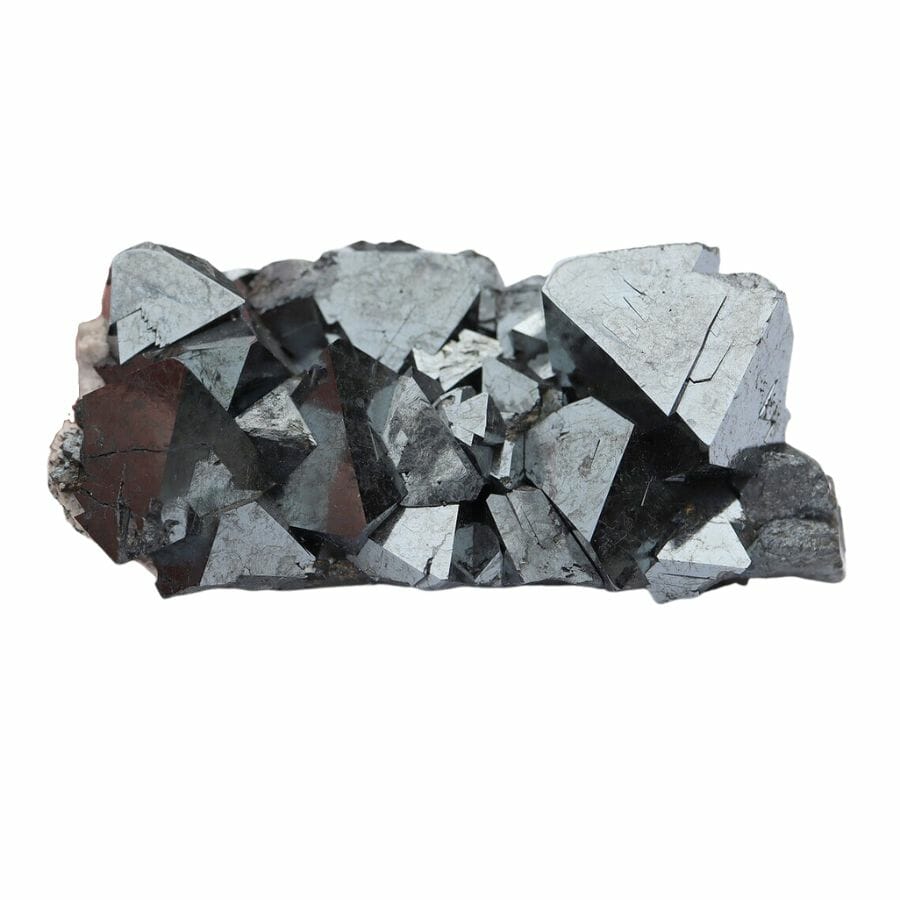
Diving into the world of minerals and their ability to conduct electricity can be fascinating, especially when looking at hematite and magnetite.
Hematite is like that friend who might show up to a party, but only if the mood is right. It’s a semiconductor, which means it can conduct electricity, but only under certain conditions.
It won’t always let electricity pass through freely; the environment has to be just right for hematite to let its guard down and allow the flow of electrical current.
Magnetite, on the other hand, wears a few more hats when it comes to conductivity. Thanks to its rich iron content, magnetite is generally better at letting electricity flow compared to hematite.
But here’s where it gets even more intriguing: magnetite can change its mind based on the temperature. At higher temperatures, it’s all in for conducting electricity.
Cool it down, and it becomes a strong insulator, putting a halt to the flow of electrical current.
Formation – Hematite forms in lakes and hot springs
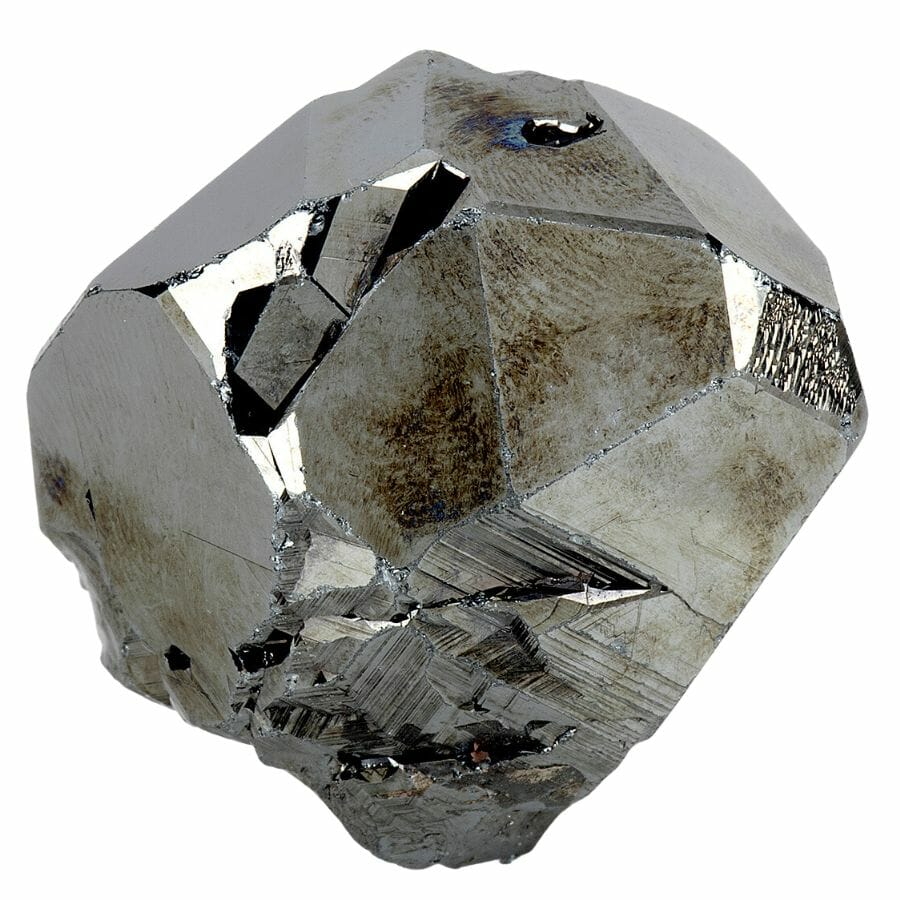
The story of how minerals come to be is always a captivating one, and the tales of hematite and magnetite are no different. These two minerals, despite their similarities, have distinct histories carved by nature’s forces.
Hematite often comes to life in calm and quiet places, like the bottom of lakes or the secluded spots of hot springs. When iron in the water interacts with oxygen, it slowly settles down in layers and eventually turns into hematite over time.
Picture a serene lake, with the fine silt of iron and oxygen gently settling to the bottom, year after year. This gradual process is how hematite takes form in many sedimentary environments.
If you’re going rock hunting near you, keep an eye out for hematite in these sorts of areas.
Magnetite, however, has a broader travel diary. It doesn’t stick to just one type of environment.
Sure, it can form in sedimentary settings like hematite, but it’s also known to originate from intense heat and pressure in igneous and metamorphic rocks.
These fiery conditions, often driven by volcanic activities or the deep-seated movements of the Earth, can give birth to magnetite. High-temperature fluids coursing through rocks can lead to the formation of rich veins of magnetite.
Magnetism – Magnetite is magnetic
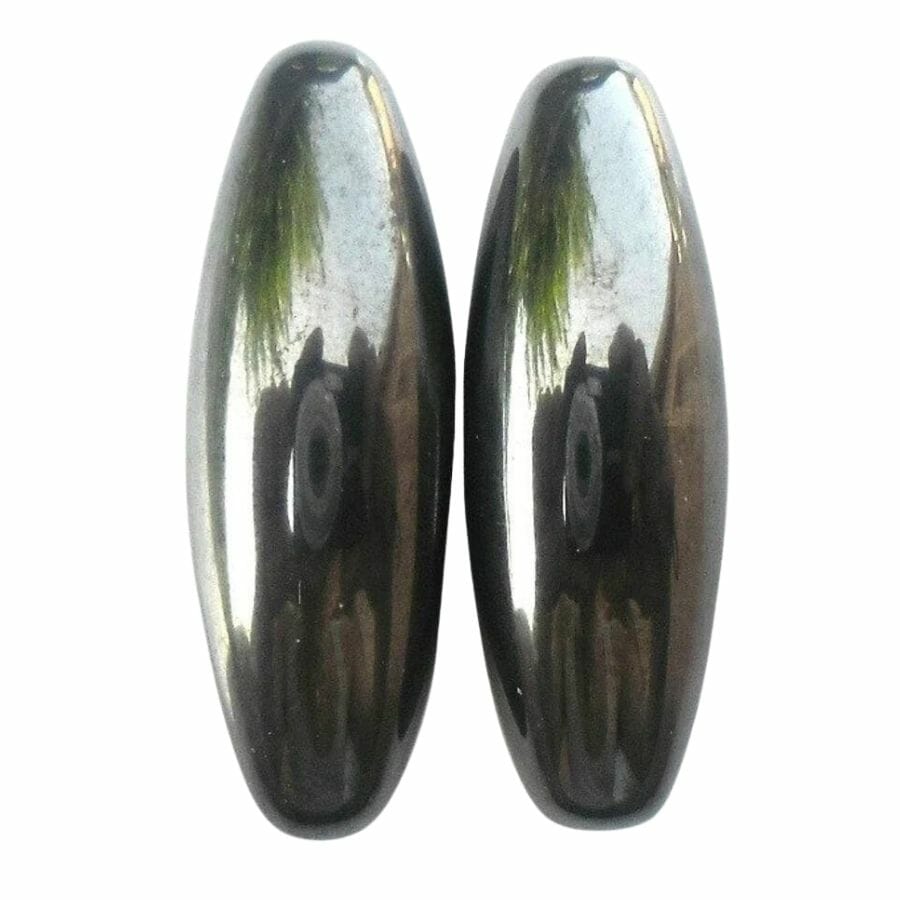
Magnetism is a really interesting way to tell magnetite vs hematite.
Hematite doesn’t really play by the magnetic rules much. It’s either weakly magnetic or might not show any magnetic properties at all. If you tried to pick up bits of hematite with a magnet, you might not have much luck
Magnetite, on the other hand, loves to show off its magnetic nature. It’s strongly magnetic, which means it gets attracted to magnets with enthusiasm. If you were to wave a magnet close to magnetite, it would leap right to it.
This strong magnetic pull makes magnetite stand out from a lot of other minerals. If someone has a mystery mineral and they want to see if it’s magnetite, they can just bring a magnet close and watch the magic happen.
Price – Hematite is much more common and abundant
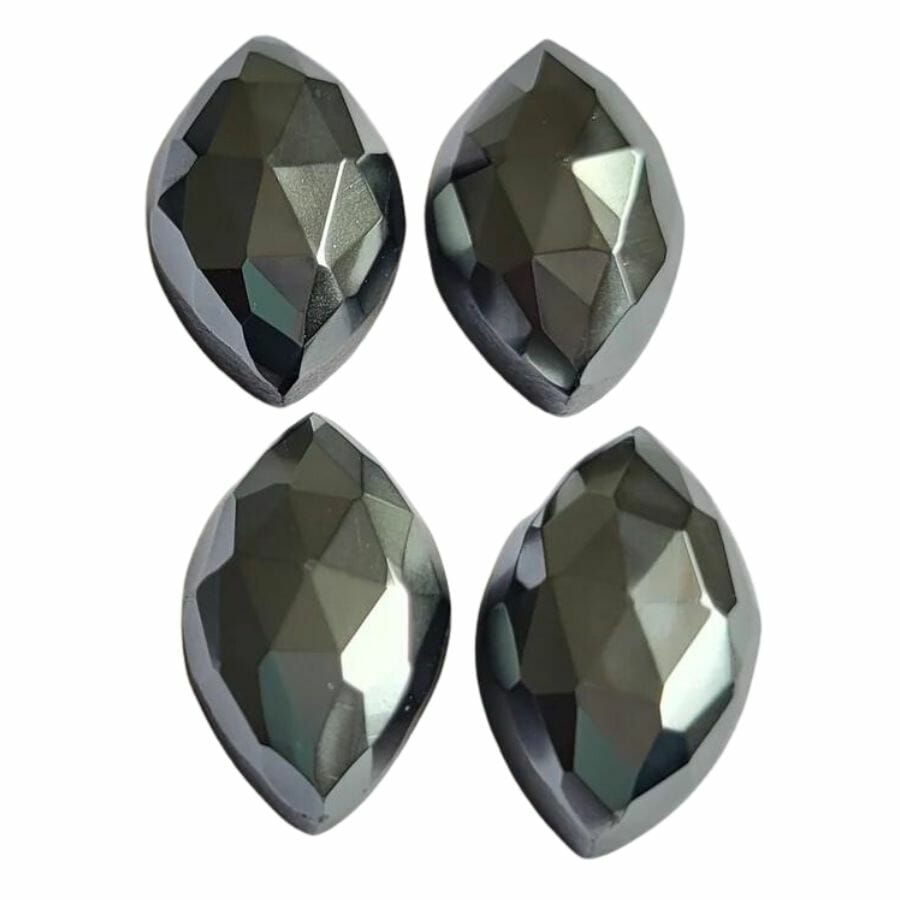
In the bustling marketplace of minerals, hematite and magnetite often take center stage, especially when talking about iron ores. They’re like the big celebrities of the iron world, but their ticket prices can be quite different.
Hematite, being more common, is like that popular song you hear everywhere. Its abundance makes it a key player in the iron ore game. However, just because it’s more common doesn’t mean it’s always cheap.
The demand, mining costs, and other factors can influence what hematite is worth.
Magnetite, even though it’s less abundant, packs a punch with its higher iron content. Think of it as a luxury version of iron ore. Because it’s rich in iron, industries often have an eye out for magnetite deposits.
When something is both high in quality and in demand, its price can go up. That’s often why magnetite iron ore deposits can fetch a pretty penny in the market.
Now, even though hematite holds the title of being the most economically vital iron ore due to its abundance, magnetite is like that rare collectible item that enthusiasts would pay a bit more for.
Both have their own value propositions, and their prices reflect a balance of abundance, quality, and demand in the world of iron ores.
Location – Magnetite can be found in more places around the globe
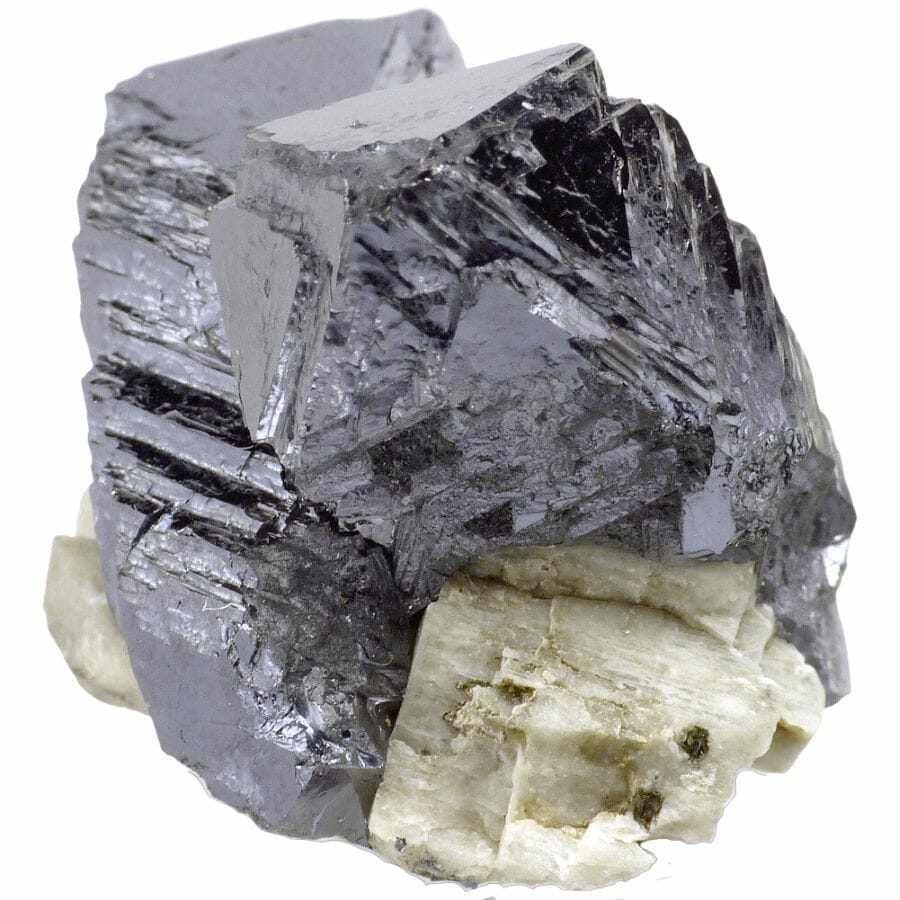
Hematite has a penchant for places with calm waters, like those still ponds or mineral-rich hot springs, such as the ones dotting Yellowstone National Park.
But don’t be fooled into thinking hematite only likes water. Volcanic regions can be a home for hematite too, with fiery eruptions leaving behind this mineral.
A notable mention is the island of Elba, boasting rich hematite deposits that have been the focus of mining for ages, going back to the times of the Etruscans.
Magnetite, on the other hand, can be imagined as the globetrotter of the two. If you’re wondering where to find crystals and specimens, magnetite is often discovered in igneous and metamorphic rocks from all over the world.
From the dry expanse of the Atacama in Chile to the scenic spots in Kiruna, Sweden, magnetite has made its mark.
Imagine vast sand dunes in southern Peru shimmering with magnetite-rich sands, or think of the majestic Kediet ej Jill mountain in Mauritania, a natural skyscraper made entirely of magnetite.
This mineral also checks into places like Uruguay, New South Wales, and even the Adirondack region of New York. That’s not all; there are chapters of magnetite’s story written in Norway, Romania, and Ukraine too.
Magnetite vs Hematite – The Similarities
Hematite and magnetite might seem different, but they have a lot in common too. Both are important iron ores and share some interesting features. Let’s find out what makes them similar!
Appearance – Hematite and magnetite are both opaque
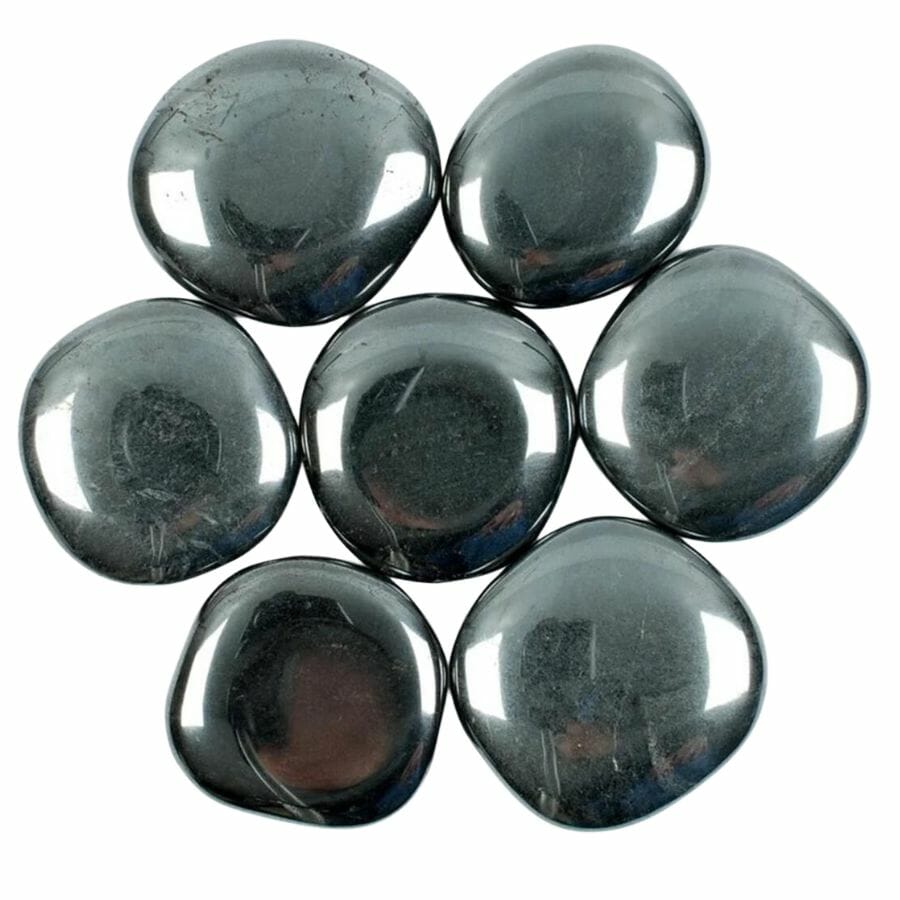
Hematite and magnetite, though distinct in many ways, often get mistaken for each other due to some striking similarities in their appearance. Both of these minerals have that rich, dark allure that draws attention.
They’re also both opaque. This means when you hold up a piece of either mineral to the light, it doesn’t let any light through. It stands as a solid barrier, keeping its internal secrets well-hidden from prying eyes.
Hardness – The two minerals have the same hardness
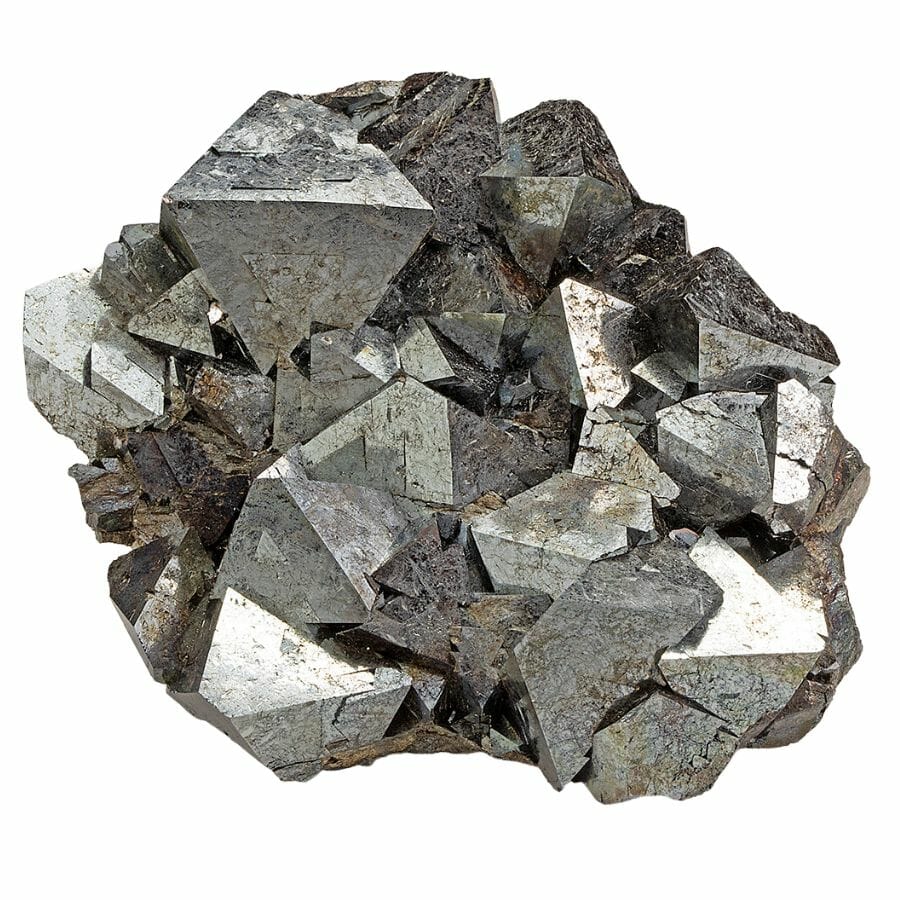
Hematite and magnetite find common ground in the realm of hardness. Both of these minerals play in the same ballpark when tested against the Mohs hardness scale, a system used to classify minerals by how easily they get scratched.
The Mohs scale runs from 1, which is super soft (think talc), to 10, which is super hard (think diamond). Nestled comfortably in the middle of this scale are hematite and magnetite, both rocking a hardness of around 5.5 to 6.5.
This means they’re moderately hard – they won’t scratch as easily as some minerals, but they’re not the toughest kids on the block either.
Imagine you’re out mineral hunting and you find two dark, shiny stones. You do a quick scratch test using a common knife, which is around 5.5 on the Mohs scale. Both stones resist being scratched.
That’s a clue they could be either hematite or magnetite, thanks to their similar hardness levels.
Cleavage – Both don’t break cleanly or evenly
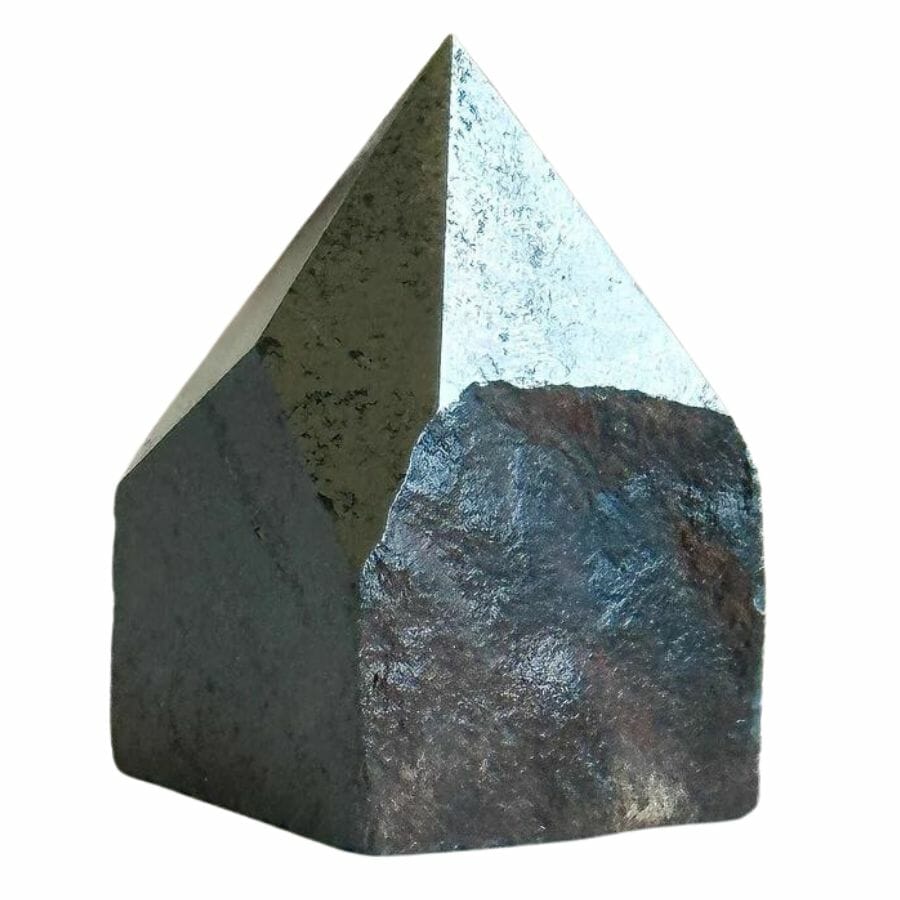
In the fascinating realm of minerals, the way a mineral breaks can tell us a lot about its character. When we talk about hematite and magnetite, their similarities in this department are quite noteworthy.
Cleavage in minerals refers to the tendency of them to break along flat surfaces. Some minerals split beautifully and cleanly, but not our friends hematite and magnetite.
Neither hematite nor magnetite will give you a smooth, clean break when you try to split them.
Instead, what you’ll get is what’s called an uneven fracture. Imagine trying to snap a chunk of old bread; it doesn’t break cleanly but crumbles in an unpredictable way.
That’s how hematite and magnetite behave. Their fractures are rough, jagged, and a little wild.
Density – Hematite and magnetite have similar densities
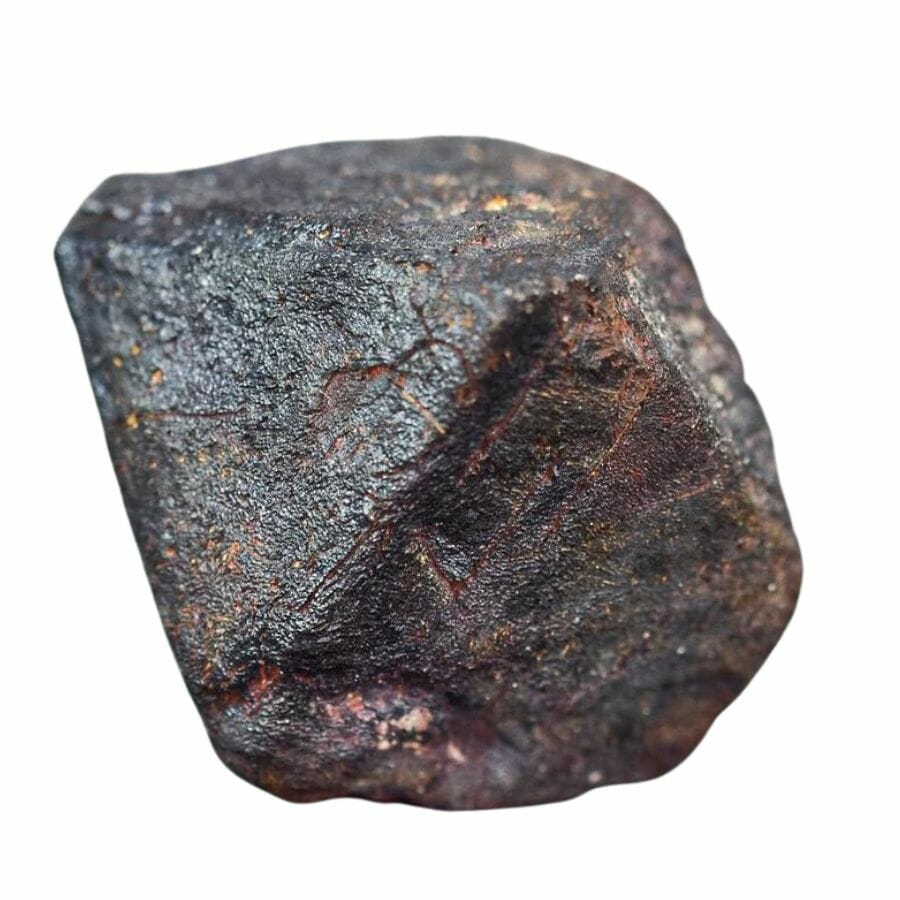
Density in minerals is a bit like the body weight of people; it tells us about their heaviness for a given size. The densities of hematite and magnetite are almost like close cousins in a family.
Hematite tips the scale with a density of about 5.3 g/cm³. That’s pretty hefty for a mineral. It means that a cube of hematite that’s about the size of a sugar cube would weigh around 5.3 grams.
Not too far behind, magnetite clocks in at about 5.17 to 5.18 g/cm³. If you were to hold chunks of both minerals of the same size in each hand, you might struggle to tell which is which based just on their weight.
Fluorescence – Neither mineral glows under UV light
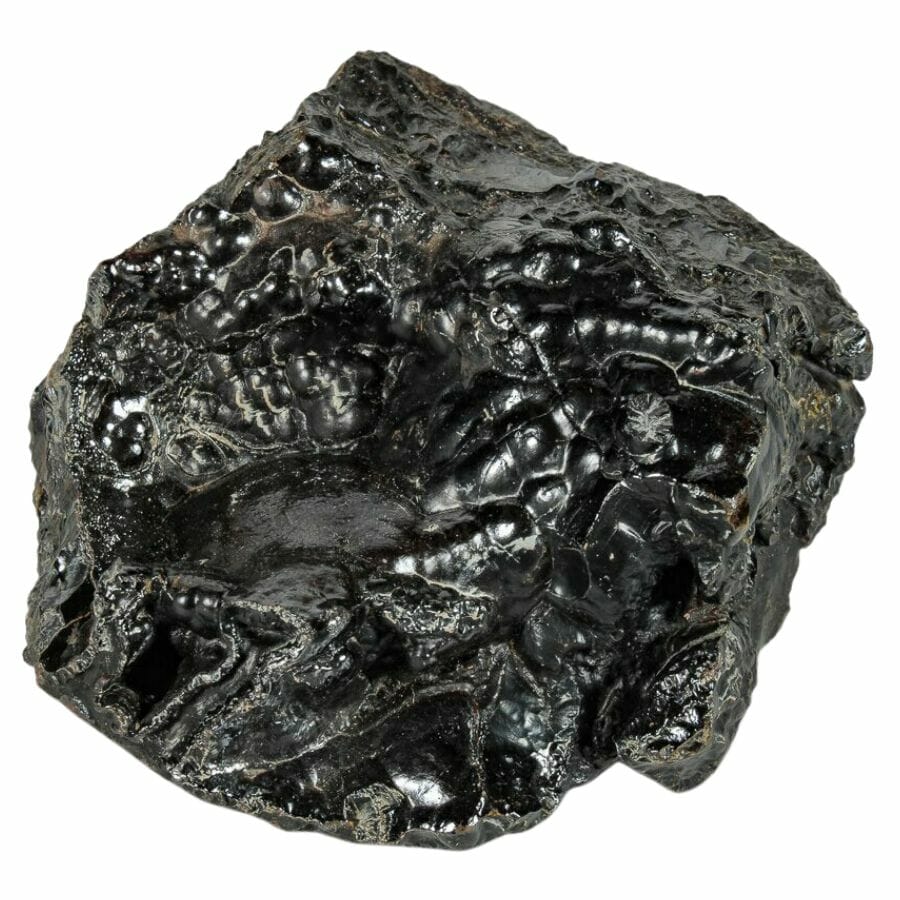
Fluorescence in minerals is a bit like a surprise party trick. Some minerals, when exposed to ultraviolet (UV) light, put on a dazzling display by glowing in brilliant colors. It’s a spectacle that can be both unexpected and delightful.
However, not all minerals have this ability, and this is where hematite and magnetite share some common ground.
When hematite is put under ultraviolet light, it stays true to its character and doesn’t light up. Similarly, magnetite, despite all its magnetic appeal, also chooses to sit out the fluorescence party. Under UV light, it too remains dark and non-glowing.
This lack of fluorescence in both minerals might sound like a letdown, but it’s actually quite informative.
If someone ever encounters a dark, heavy mineral that doesn’t glow under UV light, hematite and magnetite could be top contenders for its identity.
The Easiest Ways to Tell Hematite and Magnetite Apart
Hematite and magnetite might seem similar, but there are some cool ways to tell them apart. From the colors they show to the way they react to magnets, these two minerals have distinctive traits.
Check for magnetism
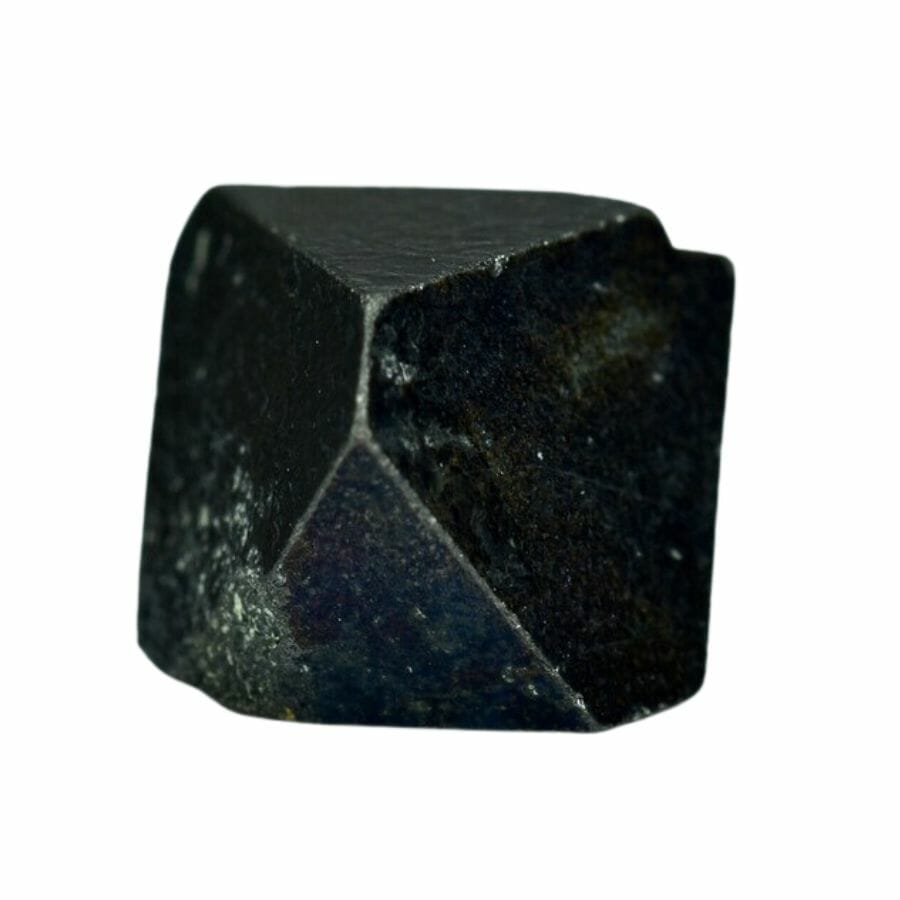
The magnet test is a bit like a magic trick in the world of mineral identification. Think of it as a quick game of “magnet says” to spot the difference between hematite and magnetite.
Take a small magnet; even one off the fridge will do. Now, hover it close to the mineral in question. If there’s a pull, almost as if the rock wants to dance its way to the magnet, then a bet on magnetite would be a good one.
Magnetite, true to its name, has strong magnetic qualities that make it hard to miss in this test.
On the flip side, hematite might play a bit hard to get. While it isn’t completely void of magnetic characteristics, its magnetic pull is much more subtle, often so faint that it’s almost nonexistent.
In many cases, hematite might just ignore the magnet altogether, showing no interest in joining the magnetic tango.
In essence, it’s a simple yet effective method. If the mineral acts like it’s been best friends with the magnet for years, it’s likely magnetite. If it plays coy and stays put, chances are, it’s hematite.
A little magnet can reveal a lot about these minerals, making the task of telling them apart a breeze.
Look at the color
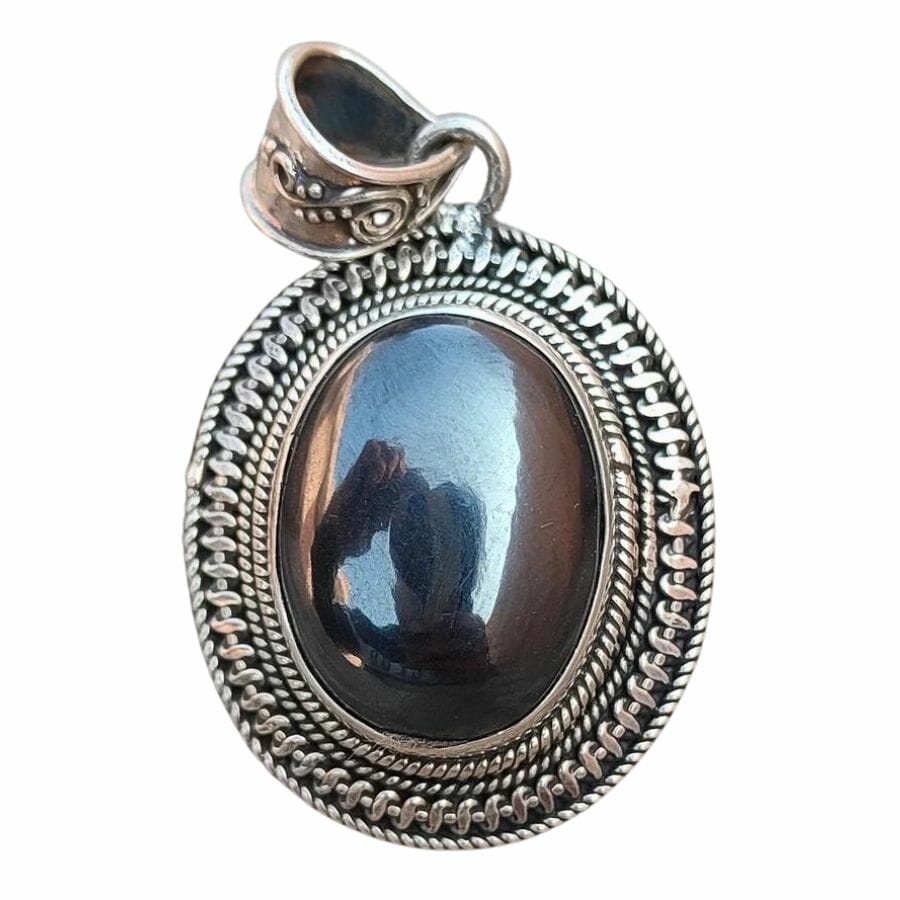
Distinguishing between hematite vs magnetite by color can feel a bit like a visual scavenger hunt. With each mineral having its own unique shades, the differences become quite telling with a keen eye.
Hematite, for one, is quite the chameleon. It wears its metallic grey shade with pride, often fooling the observer into thinking it’s a piece of shiny metal.
But just when one thinks they’ve figured it out, hematite throws a curveball with its rust-red shade. This red is reminiscent of an old bicycle left out in the rain for too long, rusting away.
And if that wasn’t enough, the mineral can also show up in hues ranging from steel-grey to a deep, profound black, especially when it’s in its crystalline form.
Magnetite, in contrast, has a more straightforward wardrobe. It’s usually dressed in a deep black.
But don’t let that uniformity fool you. On a sunny day, if one observes carefully, magnetite can reveal a soft brownish tint, adding a layer of depth to its dark facade.
Do the streak test
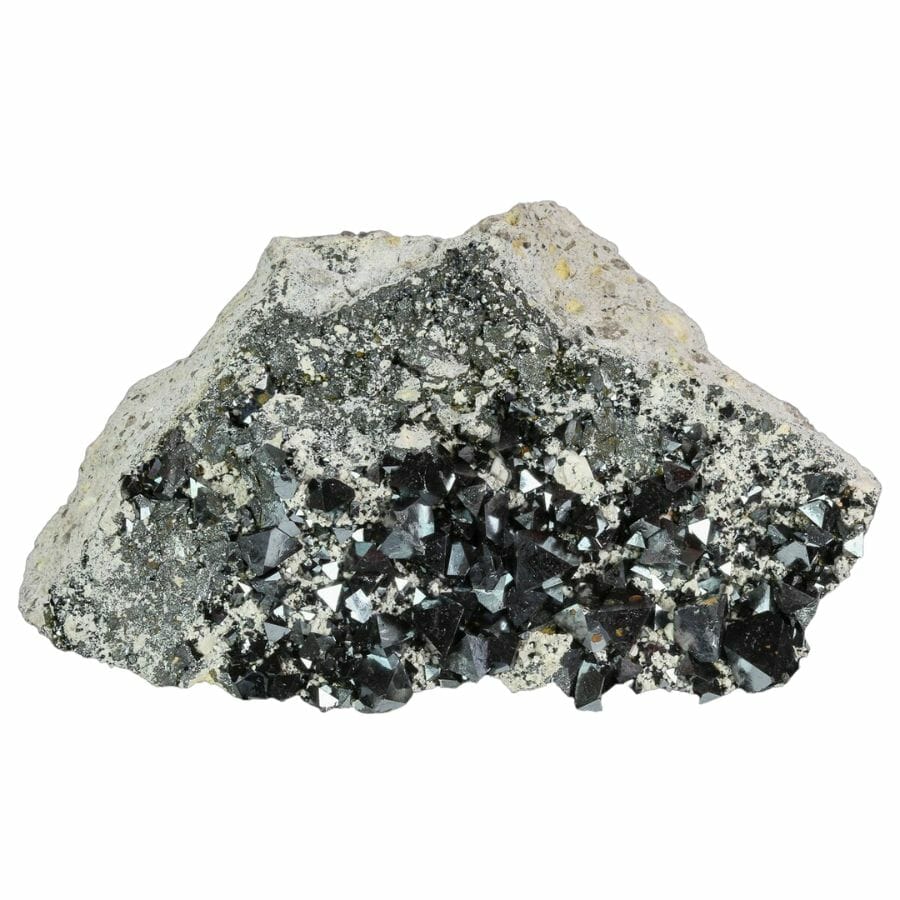
Using the streak test to distinguish between hematite and magnetite is a bit like solving a puzzle with clues. The streak test, in essence, lets the mineral reveal its true color in powdered form.
For hematite and magnetite, the difference is quite noticeable.
Start with the streak plate, a handy tool in the mineral identification kit. It might look like an ordinary piece of porcelain tile, but it’s about to unveil a mineral’s secret.
Now, take the mineral in question and give it a good rub across the plate. It’s like using the mineral as chalk, with the plate serving as the chalkboard.
Hematite’s streak is a distinct red to reddish-brown. Imagine drawing a line with a crayon that’s seen many sunsets.
On the other side, magnetite leaves a clear black streak behind. It’s straightforward and unmistakably dark.

